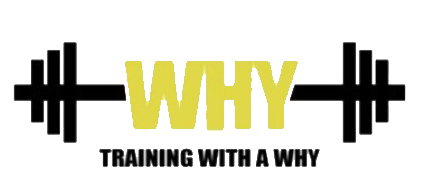Even at an early age I was an analytical person. I needed to know specifics about why I was doing something and what the expected outcome would be. I guess being this way meant that the opposite was also true, because I hated flying by the seat of my pants. I hated not having a plan and could never understand how people could just go by feel, especially when trying to accomplish a goal. So when I began weight training at the high school in the summer before my freshmen year and the coach gave us our workout sheet to record everything we did I was in nerd heaven. We recorded our sets, reps, and the weight we used. Being the nerd that I am, I made notes in the margins about technique, how the weight felt, etc. I loved seeing my improvement from week to week even if it was in small amounts. Luckily for me loving this process is probably the biggest reason I quickly became one of the strongest athletes on the team, even keeping up with kids a couple years older than me. When trying to become stronger, keeping to a strict number of sets and reps and methodically increasing the weight will work wonders. I guess what I am trying to say is that when wanting to get stronger it is always wise to have a plan.
Now, I told that story so I could tell this story. As told above, I began weight training as a means to be a better football player. My number one goal was to become stronger and remained my goal until my playing days were over. However, my love for bodybuilding continued to grow as I got older. In the off-season’s I would play around with certain exercises and bodybuilding techniques to see if I could get a specific body part to grow or look better. This experimenting worked and I grew bigger and more developed aesthetically. What I also did was carry over my analytical brain to my bodybuilding training. I kept notebooks upon notebooks of sets, reps, and weights used. I used the same exercises for weeks and even months, afraid to stray off script and ruin any progression I had created. This worked, to an extent. However, I eventually began hitting walls and plateaus, not seeing the improvement in muscle size or shape I was accustomed to. This frustrated me because I was doing everything I was supposed to be doing, or so I thought. I realized something needed to change so my nerd side took over and I began to research and read all the bodybuilding content I could get my hands on. What I realized was that what needed to change was my way of thinking. I had to pretty much do the exact opposite of what I had done when I was training for strength. Bodybuilding is more about feel and less about staying on script. This was an enormous challenge mentally for me. I hated the thought of just going by how I felt and not having a concrete plan. I needed to make a conscience effort to change my way of thinking and it worked! This is what I did:
Changes I Made
- I stopped counting my reps, instead went to failure more often.
- I stopped counting all my sets, if a certain exercise felt really good that day I kept doing more and more sets.
- I stopped writing down my accessory exercises.
- If an exercise didn’t feel good on a certain day I scratched it and moved on.
- I switched up the exercises I did more often. Sometimes every workout.
- I payed more attention to how my muscle felt during the exercise.
Now, I don’t want to confuse you. Weight training is about progressive overload. No matter your goals your body needs a reason to change or it simply won’t. You must consistently challenge your body’s limits in order to induce change. There are times to have a concrete plan and record absolutely everything you do. There are also times where you must go by feel and listen to what your body is telling you. In order to help you differentiate when the right time to do either one is I have made a list for each circumstance.
When to Record Weights, Reps, Sets, Etc.
- When strength is the goal.
- When you are following a specific program in order to achieve a certain goal.
- When your goal is a tangible aspect such as a maximal weight or reps performed.
When Not to Record Weights, Reps, Sets, Etc.
- When training for size and or shape.
- When executing accessory type exercises.
- When an exercise feels really good. (Just keep going through sets)
- When an exercise feels “off”. (Scratch it and move on)
Again, this is just what worked for me. You may find that other tactics work for you but I hope that this gives you some idea of how different ways of thinking can lead to differing results.
As always, thanks for reading and be sure to support this site by subscribing with your email.



Someone finally said the obvious.
I’ve noticed so many people get obsessive, recording everything, following a strict programme, etc, forgetting the body doesn’t work this way – it responds to stress in different ways depending on the day.
Brilliant post, this is now the way I use weights as a track & field athlete, and it has made the world of difference.